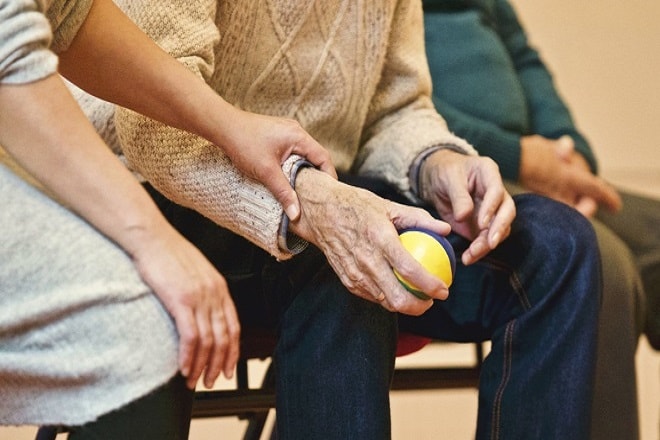Understanding Joint Pain Treatment: A Guide to Relieving Discomfort and Improving Mobility
Joint pain can significantly impact daily life, making simple tasks challenging and uncomfortable. This comprehensive guide explores various treatment options, strategies for reducing discomfort, and tips for maintaining healthy joints. Whether you're dealing with occasional aches or chronic pain, understanding these approaches can help you find relief and improve your overall quality of life.

What are the common causes of joint pain?
Joint pain can stem from various factors, including:
-
Osteoarthritis: The most common form of arthritis, characterized by the breakdown of cartilage in joints.
-
Rheumatoid arthritis: An autoimmune disorder causing inflammation in the joints.
-
Gout: A type of arthritis resulting from the buildup of uric acid crystals in joints.
-
Injuries: Sprains, strains, and fractures can lead to joint pain.
-
Overuse: Repetitive motions or excessive physical activity can strain joints.
-
Age-related wear and tear: Natural deterioration of joint tissues over time.
Understanding the underlying cause of your joint pain is crucial for determining the most effective treatment approach.
What are the primary treatment options for joint pain?
There are several treatment options available for managing joint pain:
-
Medications: Over-the-counter pain relievers like ibuprofen or naproxen can help reduce inflammation and discomfort. For more severe cases, prescription medications may be necessary.
-
Physical therapy: Targeted exercises and stretches can improve joint flexibility, strength, and range of motion.
-
Lifestyle modifications: Weight management, dietary changes, and activity adjustments can significantly impact joint health.
-
Hot and cold therapy: Applying heat or cold to affected joints can provide relief and reduce inflammation.
-
Assistive devices: Braces, splints, or walking aids can help support painful joints and improve mobility.
-
Surgery: In severe cases, surgical interventions like joint replacement may be recommended.
What are key strategies for reducing joint discomfort?
Implementing these strategies can help alleviate joint pain and improve overall comfort:
-
Regular low-impact exercise: Activities like swimming, cycling, or yoga can strengthen muscles around joints without putting excessive stress on them.
-
Maintain a healthy weight: Excess weight puts additional strain on weight-bearing joints, so managing your weight can significantly reduce pain.
-
Practice good posture: Proper alignment can help distribute weight evenly and reduce stress on joints.
-
Use proper body mechanics: When lifting or carrying objects, use your legs and core muscles to avoid straining your joints.
-
Stay hydrated: Adequate hydration helps maintain the synovial fluid that lubricates joints.
-
Consider supplements: Some people find relief with glucosamine and chondroitin supplements, although scientific evidence is mixed.
How can diet impact joint health and pain management?
Your diet plays a crucial role in managing joint pain and promoting overall joint health:
-
Anti-inflammatory foods: Incorporate foods rich in omega-3 fatty acids, such as fatty fish, walnuts, and flaxseeds, which can help reduce inflammation.
-
Antioxidant-rich fruits and vegetables: Berries, leafy greens, and other colorful produce contain antioxidants that may help protect joints from damage.
-
Whole grains: These provide essential nutrients and fiber, which can help maintain a healthy weight and reduce inflammation.
-
Limit processed foods: Highly processed foods often contain ingredients that can promote inflammation.
-
Moderate alcohol consumption: Excessive alcohol intake can exacerbate joint pain and inflammation.
-
Stay hydrated: Drinking plenty of water helps maintain the synovial fluid that lubricates joints.
What are some tips for maintaining healthy joints in the long term?
In the United Kingdom, maintaining joint health is particularly important due to the prevalence of conditions like osteoarthritis. The National Health Service (NHS) reports that approximately 10 million people in the UK have arthritis or similar joint conditions. To support long-term joint health:
-
Engage in regular, low-impact exercise to keep joints flexible and muscles strong.
-
Maintain good posture and ergonomics at work and home.
-
Stay at a healthy weight to reduce stress on weight-bearing joints.
-
Quit smoking, as it can increase the risk of rheumatoid arthritis and exacerbate existing joint problems.
-
Protect your joints during physical activities by using proper techniques and equipment.
-
Consider vitamin D supplementation, especially important in the UK due to limited sun exposure.
What are some effective non-surgical interventions for joint pain?
Several non-surgical interventions can provide relief from joint pain:
| Intervention | Description | Potential Benefits |
|---|---|---|
| Acupuncture | Traditional Chinese medicine technique using thin needles | May reduce pain and improve function |
| Massage therapy | Manipulation of soft tissues | Can improve circulation and reduce muscle tension |
| Hydrotherapy | Exercises performed in water | Provides low-impact resistance and buoyancy |
| TENS therapy | Electrical nerve stimulation | May help block pain signals |
| Platelet-rich plasma (PRP) injections | Injection of concentrated platelets from patient’s blood | May promote healing and reduce inflammation |
| Cognitive behavioral therapy | Psychological approach to pain management | Can improve coping strategies and reduce pain perception |
Prices, rates, or cost estimates mentioned in this article are based on the latest available information but may change over time. Independent research is advised before making financial decisions.
In conclusion, managing joint pain involves a multifaceted approach combining medical treatments, lifestyle modifications, and self-care strategies. By understanding the various options available and working closely with healthcare professionals, individuals can develop an effective plan to reduce discomfort, improve mobility, and maintain healthy joints over the long term.
This article is for informational purposes only and should not be considered medical advice. Please consult a qualified healthcare professional for personalized guidance and treatment.




